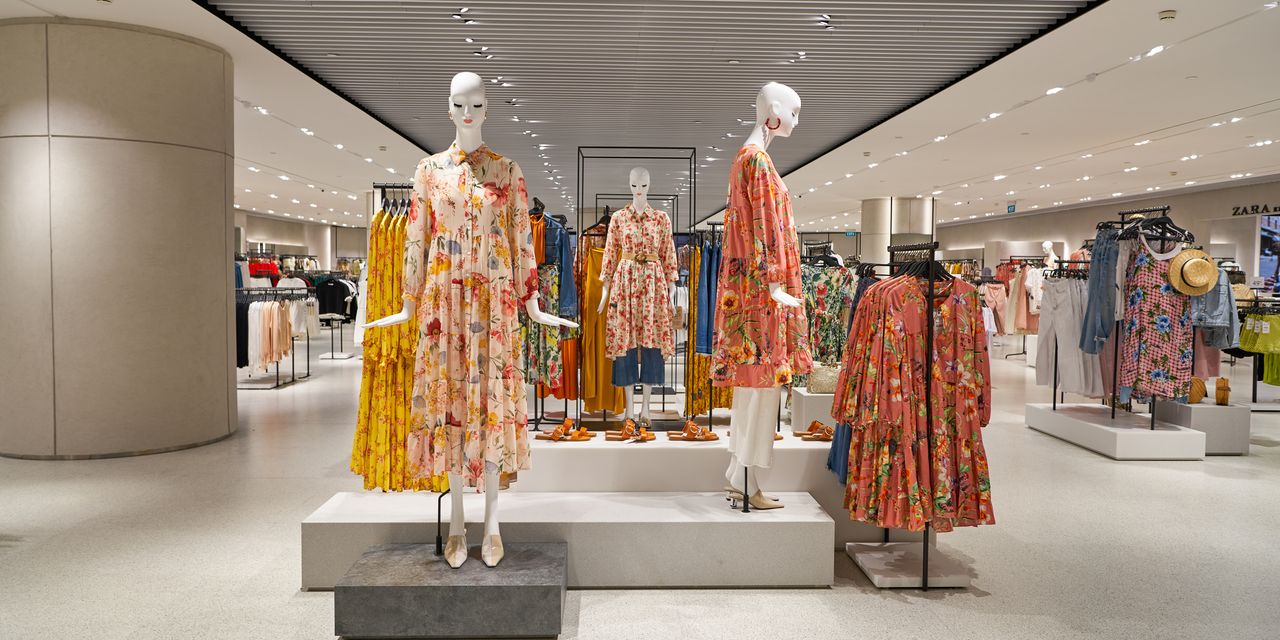Inditex plans new U.S. stores and relocations of its Zara retailer.
Dreamstime
Zara’s owner
Inditex
is looking to the U.S. as an engine for growth. If American shoppers can be tempted to spend more on its fast-fashion outfits, investors should find the shares are a good fit.
Inditex’s
(ticker: ITX.Spain) expansion in the U.S. has been cautious. It only has 101 U.S. stores, having opened its first in New York in 1989.
That could change under CEO Oscar Garcia Maceiras, who has been in charge for just over a year. Over the next two years the company plans 30 projects—including new stores, relocations and enlargements—in major American cities.
That will include new locations in New York, Boston, Charlotte, Los Angeles, Las Vegas, Dallas, San Antonio and Baton Rouge, the Financial Times has reported.
The U.S. has become Inditex’s second-biggest market at around 7% to 8% of total revenue with less than 2% of its global store network, due to its strong digital presence, according to Bryan Garnier analysts.
Increasing Inditex’s U.S. footprint will involve competition with Chinese fast-fashion company Shein. According to YipitData, spending on Shein in the U.S. surpassed Zara and its rival
H&M Hennes & Mauritz
combined in late 2021, and it has continued to grow since then.
However, Zara’s more upmarket price point should give it a distinct position in the U.S. There’s plenty of room for growth. H&M has roughly 500 American stores, and analysts at UBS say Zara could aim for a similar density.
“We see significant longtime growth opportunities in the United States. This is a market in which for every $100 of fashion sold, we take less than 50 cents,” CEO Maceiras said on a recent earnings call.
Madrid-based Inditex employs around 165,000 staff and has a market value of about 91.1 billion euros ($98.7 billion). In its latest fiscal year it reported a 17.5% rise in sales to €32.6 billion, and a 27% increase in net profit to €4.1 billion.
Inditex trades at 20.5 times its projected earnings over the next 12 months, slightly below its five-year average multiple of 22.6 times, and in line with industry peers, according to FactSet.
Shares are up 22.5% so far this year at €30.45. Analysts have an average target price of €34.52, according to FactSet, implying a potential upside of 13.4%.
There are reasons for optimism. Analysts at RBC Capital Markets argue market expectations for fiscal 2024 sales growth of about 5% are “way too conservative,” after Inditex reported more than 17% annual growth for the period to March 5, excluding Russia. Instead RBC models 9% annual growth.
Inditex benefits from industry-leading margins, helped by basing 50% of its production in Spain or nearby markets such as Portugal, Morocco, and Turkey. It expects a stable gross margin in 2023, despite a reported agreement for a 20% pay rise for store workers in Spain.
Inditex is still looking for improvements. It has introduced a fee for online returns and intends to phase out hard antitheft tags, replacing them with chips sewn into clothing to cut checkout times.
“A number of investors continue to express their surprise at Inditex’s high-teen margins in an industry where outperformers deliver well below that. The enabling of greater volumes through a better automated end-to-end business should provide greater comfort,” Jefferies analysts wrote in a recent research note.
There’s also reason to hope that Inditex could step up payouts to shareholders. It ended its latest fiscal year with €10.07 billion in cash. Its dividend policy consists of a 60% ordinary payout plus bonus dividends, which could provide a good use for its cash pile.
Inditex’s strong track record of growth and high margins should reassure investors the shares are a cut above its peers.
Write to Adam Clark at [email protected]
Read the full article here










